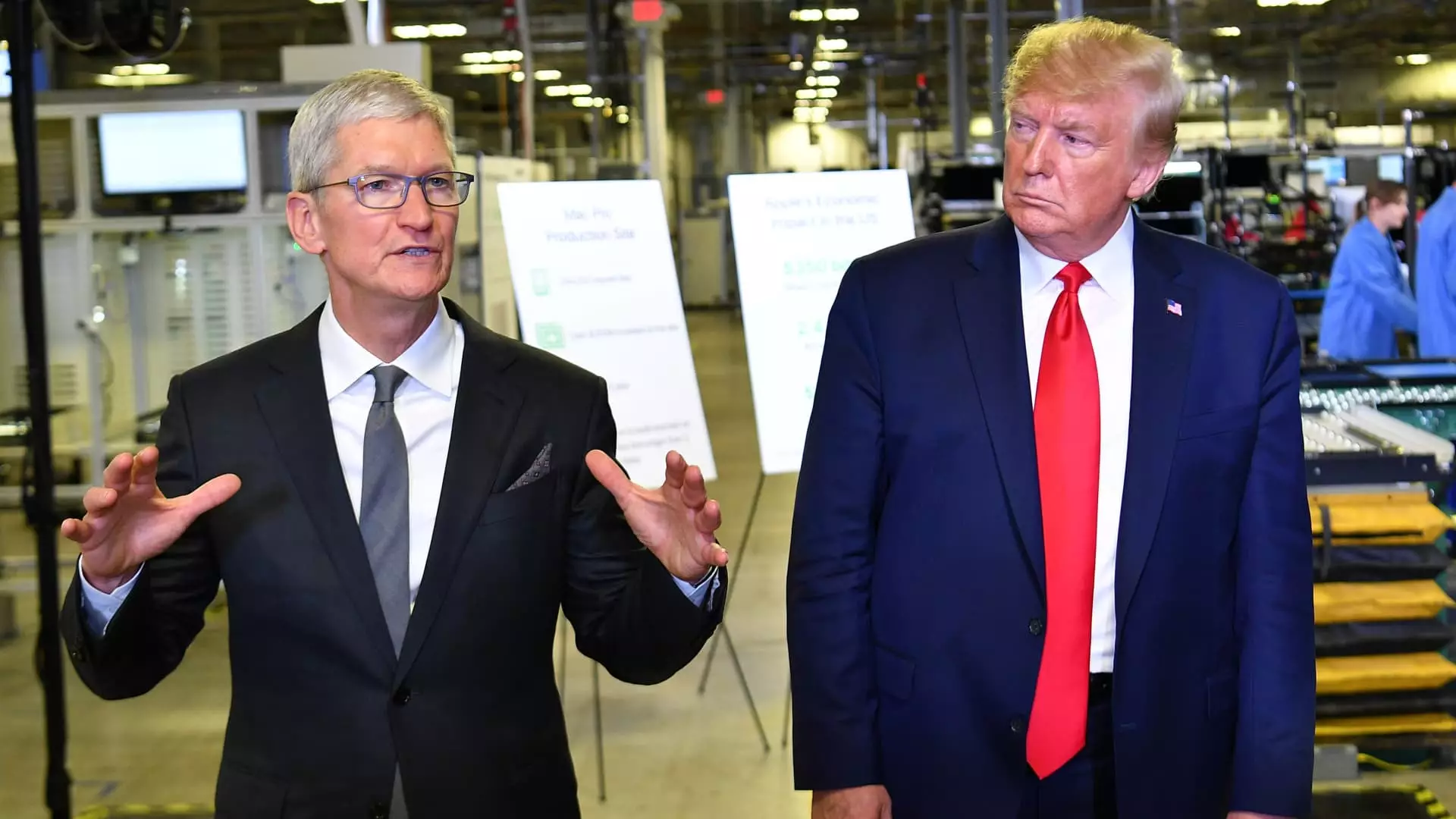In a shocking twist of America’s economic narrative, Donald Trump recently aimed his ire at Apple, a titan in the tech industry, via a provocative social media announcement. He announced that Apple could face exorbitant tariffs—potentially exceeding 25%—on iPhones assembled outside the United States. The implications of such a dramatic shift are multifaceted, presenting a perilous predicament not only for the tech giant but for consumers and the broader market as well. Beyond mere market speculation, Trump’s assertion signals a fierce escalation in his long-standing battle for “American-made” products, quite reminiscent of his previous trade conflicts, but now aimed squarely at a household name synonymous with innovation.
Manufacturing vs. Brand Value
Apple’s decision to manufacture the iPhone predominantly in China—a decision born out of a desire to maximize efficiency and minimize costs—has historically antagonized American nationalists and trade hawks. However, to face a barrage of tariffs could potentially harm their business model. Analysts speculate that shifting production back to American soil could increase the cost of an iPhone up to a staggering $3,500—three and a half times its current price point. By doing so, would Apple tarnish its brand image as an accessible luxury product? Or would it instead cultivate a new image as a proud participant in the American manufacturing renaissance?
While Trump’s directive appears to prioritize domestic manufacturing, it grossly underestimates the complexity of global supply chains in an increasingly interconnected world. For Apple, the intricacies of production do not lend themselves easily to knee-jerk changes driven by political whims. The reality is that transitioning manufacturing is not just a fiscal decision but one that speaks to brand identity and operational integrity.
Impact on Shareholder Sentiment
Trump’s threats reverberated through financial markets, leading to a notable decline in Apple’s shares. This immediate backlash underlines the fragility of investor sentiment in the face of political uncertainty. Wall Street analysts have been quick to express concerns about how this newly revived tariff tension could hamper what has been a stellar growth trajectory for the company. As tariffs loom, the question arises: Who will pay the price? Could consumers see staggering price hikes that would dissuade them from purchasing new models? Apple’s success has always hinged on its ability to innovate while maintaining a strong pricing strategy. Any disruption to that balance may erode the company’s competitive advantage.
The Political Circus
What seems to underpin this whole debacle is not merely Apple’s manufacturing choices but rather Trump’s own political agenda. By aligning his administration’s goals with the calls for “precision manufacturing,” he is effectively painting himself as a champion for American jobs, even if the reality is a convoluted maze of economic repercussions. The visit of Tim Cook to the White House earlier this month raises eyebrows—was it genuine collaboration, or just a strategic photo op? The dynamic between Trump and Cook has evolved through the years, oscillating between camaraderie and contention.
Trump’s meeting with Cook hints at the inherent volatility of corporate-Presidential relations when they veer into policies that threaten livelihoods rather than foster economic growth. It casts a pall over cooperative efforts that could lead to beneficial outcomes for the U.S. economy. Caught in this crossfire is every employee from assembly line workers to corporate strategists, each facing the unpredictable fallout from a meddling President eager to bolster his image.
In the Eye of the Storm: Apple’s Course Ahead
As if the tariff threats weren’t enough, Apple finds itself grappling with dwindling demand in China—one of its most lucrative markets. This dual assault could severely hamper the company’s profitability and growth projections. While Trump dangles the stick of punitive tariffs, what happens to consumers who rely on Apple’s products? Will they simply pivot to alternatives, or remain loyal in the face of inflated pricing? The dampening sentiment in the tech sector isn’t isolated to Apple alone; it reflects a broader anxiety about where American manufacturing is headed in the modern age—not solely driven by government dictates.
Apple’s recent initiative to enhance trade-in incentives in China suggests an understanding of the fine line they tread. A decision to buckle under political pressure might seem prudent in the short term, but one can only wonder whether submission will yield long-term benefits. The coming months will undoubtedly be a defining period for Apple as it navigates the precarious waters of economic nationalism and consumer demands, all under the ever-watchful gaze of a former president.


Leave a Reply